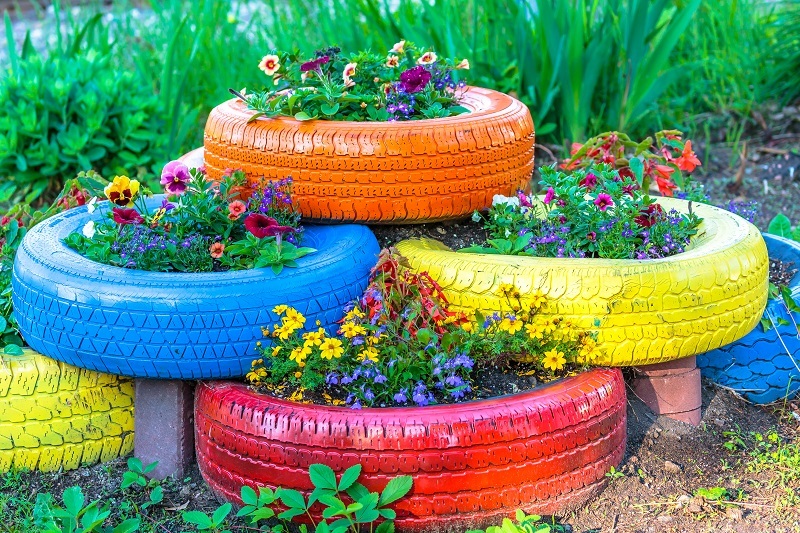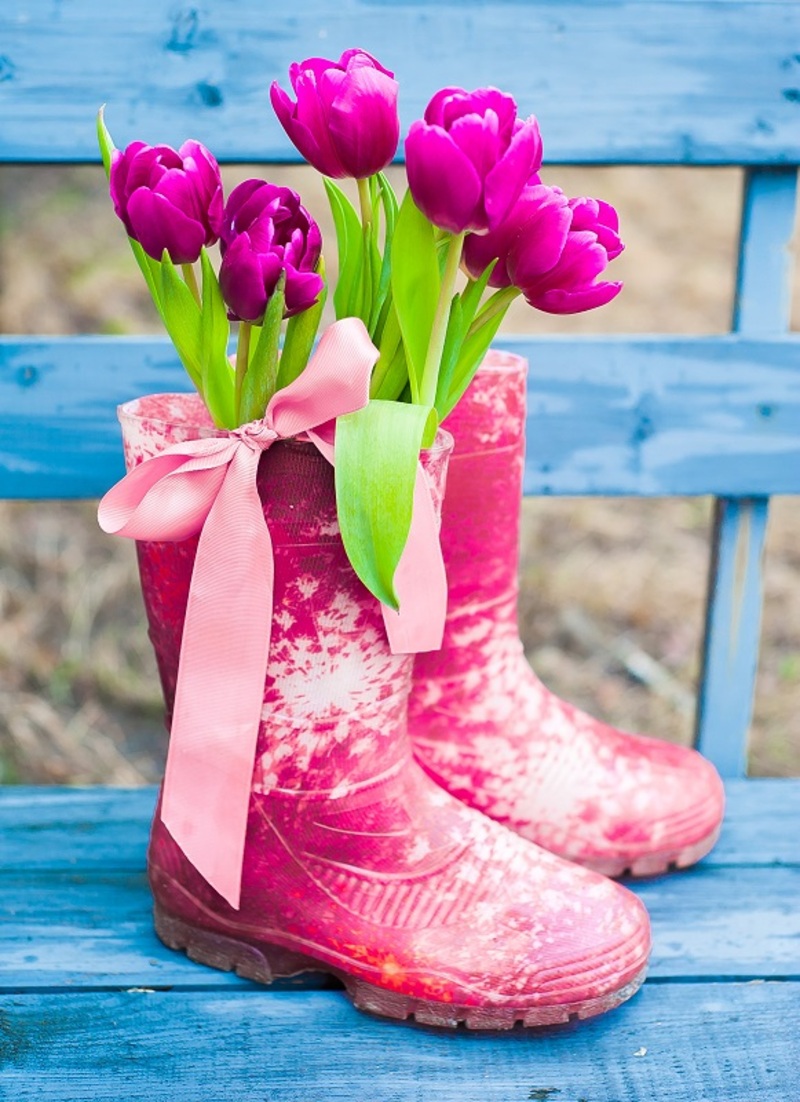Find Out 7 Incredible Tulip Facts That Will Surprise You
Posted on 01/07/2025
Find Out 7 Incredible Tulip Facts That Will Surprise You
Have you ever found yourself captivated by the vivid colors and elegant shape of a tulip? Tulips are much more than just a symbol of spring - these flowers boast a vibrant history and unique characteristics that few are aware of. In this comprehensive guide, we'll uncover seven amazing tulip facts that are bound to surprise, delight, and educate you. Dive into the world of tulips and unearth fascinating tidbits about their origins, cultural impact, and horticultural wonders!

Table of Contents
- 1. The Surprising Origin Story of Tulips
- 2. Tulipmania: The World's First Economic Bubble
- 3. The Science Behind Tulip Colors
- 4. Tulip Symbolism Across Cultures
- 5. World Records Set by Tulips
- 6. Amazing Wild Tulip Varieties
- 7. The Future of Tulip Hybridization
1. The Surprising Origin Story of Tulips
Did you know that tulips did not originally come from the Netherlands, even though the country is now synonymous with vibrant tulip fields? The history of tulips traces back to the foothills of the Tien Shan Mountains, which stretch across Central Asia. Places like Kazakhstan, Uzbekistan, and Kyrgyzstan can rightly claim to be the true birthplace of wild tulips.
Tulips were first cultivated in the Ottoman Empire (present-day Turkey) around the 16th century. The flower was so revered in Turkish lore that it lent its name to an entire historical period--the Tulip Era (or Lale Devri)--which symbolized peace, prosperity, and enjoyment of the arts.
- Fact: The word "tulip" is derived from the Persian word "delband", which means turban, inspired by the flower's resemblance to a turban.
- Fact: Ottomans cultivated thousands of tulip bulbs in imperial gardens, and possession of unique tulip varieties was seen as a sign of prestige.
2. Tulipmania: The World's First Economic Bubble
One of the most astonishing tulip facts is that tulips were responsible for the world's first recorded economic bubble. The phenomenon, known as Tulipmania, occurred during the Dutch Golden Age in the 17th century. As tulip popularity soared, the price of tulip bulbs skyrocketed to unbelievable heights, with some single bulbs costing as much as a luxurious Amsterdam house!
- At the height of Tulipmania, rare tulip bulbs like the 'Semper Augustus' were sold for more than 10 times the annual income of a skilled craftsman.
- When the bubble finally burst in February 1637, it led to widespread financial ruin among investors and traders.
Today, the term "Tulip Mania" is used as a cautionary tale for speculative financial bubbles.
3. The Science Behind Tulip Colors
Tulips are globally treasured for their rainbow palette--ranging from soft pastels to vivid, saturated hues. But have you ever wondered what gives tulips their captivating colors?
- Tulip colors are the result of plant pigments called anthocyanins (purples, reds, blues) and carotenoids (yellows, oranges).
- The famed "broken tulips" of Tulipmania, with striking striped petals, were actually the result of a viral infection called potyvirus, which breaks the color on each petal and creates unique patterns.
Modern tulip breeders use crossbreeding and selective cultivation to create new colors every year, including rare shades like deep blue, dramatic black ("Queen of Night"), and even tulips with pointed or fringed petals.
Tulips are among the most genetically diverse ornamental flowers in the plant world, boasting over 3,000 varieties today!
4. Tulip Symbolism Across Cultures
The tulip has deep symbolism across different societies. In Turkey and the Middle East, it represents paradise on earth, as well as abundance and perfect love. In Persian poetry, tulips symbolize martyrdom and passionate love. The flower has also been featured in several art forms, including carpets and illuminated manuscripts.
- In the Netherlands, tulips symbolize national pride, resilience, and the endurance of the human spirit.
- During World War II, the Dutch government-in-exile sent thousands of tulip bulbs to Canada as a thank-you for sheltering the Dutch royal family. This led to the annual Canadian Tulip Festival in Ottawa, a symbol of international friendship.
- In Victorian times, tulip bouquets sent secret messages--red tulips for declaration of love, yellow for cheerful thoughts, and white for forgiveness.
The language of tulips is as colorful as the flowers themselves!
5. World Records Set by Tulips
Tulips are not just garden favorites; they're also record-breakers! Here are some incredible world records related to tulips that will truly surprise you:
- Largest Tulip Festival: The world's largest tulip festival is the Canadian Tulip Festival in Ottawa, displaying over a million blooming bulbs every May.
- Highest Number of Varieties: The Keukenhof Gardens in the Netherlands showcase over 800 tulip varieties in breathtaking displays, drawing visitors from all over the globe.
- Tallest Tulip: The tallest known tulip reached an extraordinary height of 2 meters (over 6.5 feet)!
- Longest Single Tulip Bed: In 2021, the city of Istanbul set the Guinness World Record with a tulip bed stretching over 2626.5 meters--more than 1.6 miles!
Fun Fact: The Dutch export more than 2 billion tulip bulbs annually, making the Netherlands the world's largest tulip producer.
6. Amazing Wild Tulip Varieties
When you picture a tulip, you probably imagine the classic, upright bloom in striking red or yellow. However, tulip wildflowers represent remarkable diversity in form, size, and habitat!
- Tulipa clusiana (Ladies' Tulip): Native to the Middle East, this species features slender petals with cherry-red and white stripes.
- Tulipa tarda: Discovered in Kazakhstan, this lovely wildflower is famous for its star-shaped yellow and white petals.
- Tulipa sylvestris (Woodland Tulip): Known for its nodding yellow blooms, this variety thrives in meadows and light woodlands across Europe.
- Wild tulips are often more fragrant than cultivated varieties - a hidden delight for nature lovers!
These wild species are essential for tulip conservation and genetic diversity, as they provide resilience against pests and diseases.
7. The Future of Tulip Hybridization
Tulip breeding is a dynamic field, blending science, technology, and artistry. Modern botanists are not only focused on new colors and petal shapes, but also on issues like climate adaptation, disease resistance, and longer blooming seasons.
- Scientists use advanced techniques like genome sequencing to decode tulip DNA, helping breeders create hardier, more spectacular blooms.
- Sustainable practices, including organic bulb farming and eco-friendly packaging, are taking root in the tulip industry.
- Artists and horticulturists collaborate to create stunning new hybrids, with petals that resemble fiery flames, shimmering crystals, and even parrots' feathers!
The future of tulips is as bright and bold as their petals--guaranteeing that the world's love affair with tulips will continue for generations to come.

Conclusion: The Enduring Magic of Tulips
Whether you are a seasoned gardener, a blossom lover, or simply someone seeking new tulip facts to dazzle your friends, these seven remarkable insights prove that tulips are much more than a springtime staple. They are symbols of history, art, economics, and natural wonder--flowers that have traveled the globe and captured countless hearts along the way.
- From their exotic origins in Central Asia,
- To the excitement of Tulipmania,
- Across their scientific beauty, cultural significance, and record-setting achievements,
- To wild tulip species and the future of ethical hybridization,
Tulips remain a testament to nature's creativity and humanity's passion for beauty. Next time you see a tulip in bloom, remember these incredible stories--and let the petals remind you of the world's endless wonders.
Explore More Surprising Facts About Tulips
If you want to uncover more fascinating tidbits about tulips, feel free to explore our related articles. There's always another unique fact about tulips waiting to be discovered!







